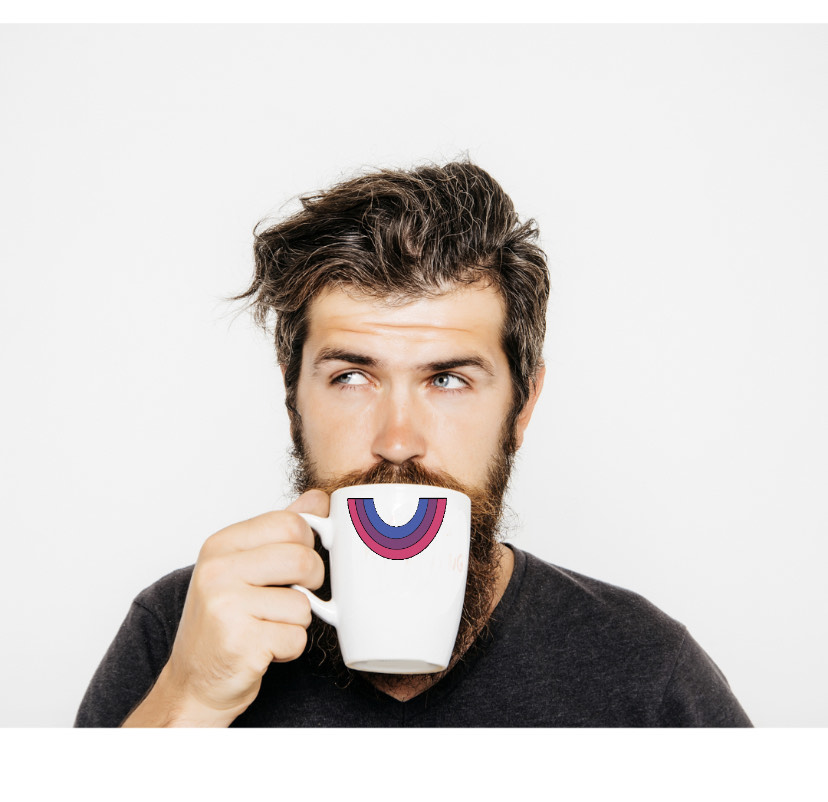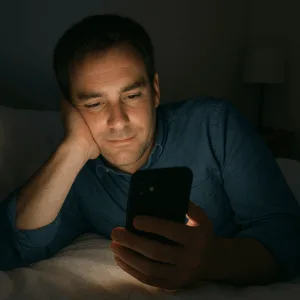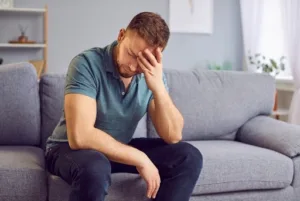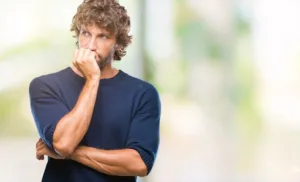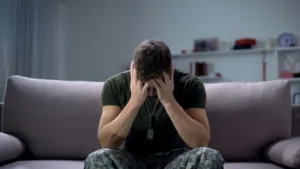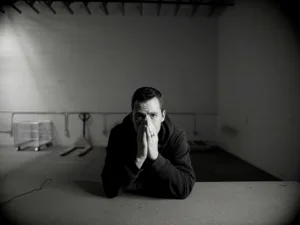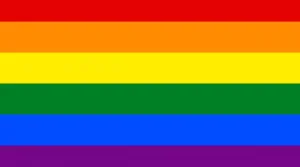September is Bisexual Visibility Month. As the autumn temperatures begin to cool and people start basic-shaming pumpkin spice enthusiasts, how about instead we turn that critical eye to how bisexual erasure is as basic as it gets. Maybe by switching perspectives, bisexual visibility be respected as a form of Social Justice.
Healing bisexual erasure and creating bi visibility is social justice. In my career as a LGBTQ+ specialized therapist, I am moved by how my practice has evolved to orient around bisexual mental health. I find meaning and purpose in creating a safe space for people who identify as bisexual
to explore, question, and be curious about their sexual orientation. As a therapist, effective therapy is a form of social justice. Culturally, we put people into boxes and hold them to those labels, removing their agency for curiosity, change, evolution, and simple authenticity. Using assumptive and oppressive language: like ‘He isn’t bi… he just is afraid to come out,’ ‘they are just a slut and will take whatever they can get,’ ‘she just hasn’t had a good dick yet,’ is so outdated and offensive, and so pervasively used. This speaks to how, on a cultural level we are failing huge populations of our communities by forcing people into restrictive frames like ‘straight’ or ‘gay’ out of convenience or frankly, laziness.
Bi Erasure Defined
In the rare cultural conversations about bisexual erasure, the topic gets overly simplified, which speaks directly to the larger cultural issue itself. The overly simplified definition is: not seeing someone’s bisexuality (making it invisible) or denying one’s attraction to others based on how you see them (to erase what is presented.) The truth is, bisexual erasure and invisibility is a jackpot of evidence of how harmful dominant cultural beliefs are and how those beliefs move through all of us, consciously or not. So, let’s dive in.
Heteronormativity, Heterosexism, and Homonormativity
LGBT Psychologist and Author Douglas Haldeman (2007) described the pervasive nature of heterosexism as a perpetuate of marginalization. Haldeman viewed heterosexism as “the presumption of heterosexuality as the only normal sexual identity and behavior.” Essentially, heterosexism is the unacknowledged belief that heterosexuality is the norm and therefore variants go unseen, marginalizing LGBTQ+ communities through invisibility. When bisexual identities are demonstrated, however, they are met with biases, prejudices, and discrimination. Socially, in heteronormative systems that adhere to strict binary gender roles and sets of rules, “LGBT people are considered undeserving of equal access to heteronormative structures . . . that are the unquestioned rights and privileges of the heterosexual majority” (Haldeman, 2007, p. 98).
Oppression
Psychologist Beth Firestein (2007) observed that “the effects of heterosexism are pervasive” (p. 98). The assumption that one is straight is one of the major forms of oppression controlling every individual who does not conform to gender roles, gender binary, gender expression or sexual practice expectations, all of which prioritize a misogynic value system (primarily, cis-straight-white-male dominance.) Social and ideological assumptions and expressions of prejudice are covert methods of oppression. Other harmful forms of oppression are systemic, ever-present, and at the forefront of American cultural dialogue today (Firestein, 2007, p. 98).
Homonormativity
There is a trickledown effect of the dominant culture that disseminates within subcultures and the wider diversity of LGBTQ+ communities including bi erasure. For those who are a part of the greater LGBTQ+ community, it is easy to see how gay men and lesbian women, especially cis gender, possess the most privilege and power. The label for this specific type of dominant culture within our subculture is homonormative. Homonormativity is a form of cultural dominance in LGBTQ+ communities that resembles cis-heterocentricism in mainstream culture with parallel social values, biases, norms, and judgments. It is easier to identify the harmful effects of bisexual erasure from heterosexual culture. However, it is even more important to see how harmful it is for bi folks to be erased within LGBTQ+ spaces. Bi erasure hurts our bi siblings so much more when queer folks do it, let’s do better and not be basic.
Microaggressions
LGBT advocate Jerry J. Bigner and psychologist Joseph L. Wetcher (2012) explains microaggressions as the subtle, everyday discrimination experienced by LGBTQ+ folks based on their orientation and identity. The aggressive acts are described as “micro” because they are covert in nature and manifest through understated actions such as being ignored, slighted, and other hard-to-name forms of unequal treatment. Adherence to the gender binary, gender roles, normativity, bisexual erasure, and invisibility are widespread, systematic examples of microaggressions because most people are unaware of their marginalizing effects. Other examples of microaggressions include the avoidance of talking about someone’s bisexuality, denying that they are who they say they are, or undermining someone’s self-awareness (Bigner and Wetcher p.255, 2012). Heterosexism, homonormativity, microaggressions, bi erasure and bi invisibility create an invisible cage to contain a bisexual person. These are unconscious and conscious attempts people act out to preserve and maintain cultural values given to us. As a society, we are starting to see the shortcomings and holes in the American heterosexual-cis-patriarchy, and oh my god it is so basic and boring. We have not come far enough because clearly erasure still exists and forces bi folks to remain closeted.
Why Bi people stay in the closet
Pew Research Center Associate Anna Brown’s bi-sexual research findings report that, “Only 19% of those who identify as bisexual say all or most of the important people in their lives are aware of their sexual orientation. In contrast, 75% of gay and lesbian adults say the same. About one-quarter of bisexual adults (26%) are not “out” to any of the important people in their lives, compared with 4% of gay and lesbian adults. Roughly half of those who are bisexual (54%) are out to some or only a few people” (Brown, 2019). Emotional, social and physical safety are all key contributing factors as to why bi folks stay closeted. Where is the end of the quote here?
Bisexual Mental Health
New York Times Associate Writer Dani Blum found that; “when compared with heterosexual people, bisexual people had higher rates of depression and anxiety, and higher or equivalent rates of those conditions when compared with those who identified as gay.” In addition to anxiety and depression, Blum noted, “that stress and exacerbated or triggered anxiety (including panic attacks and post-traumatic stress disorder) are higher in bisexual people: (Blum, 2021). In her article, she defines the concept of being “double closeted” and outlines the fatigue bi folks experience from maneuvering through biphobic spaces, both heteronormative spaces and homonormative spaces, and its effects of exasperating mental health issues.
Therapy as social justice
It has been powerful to develop my therapy practice oriented around bi, pan and non-confirming affirmation. I joke with my clients that “I am a Bi Ally”, and they say earnestly that it’s not a joke to them. One of the main tenets of my practice is that I attempt to create an example of an affirming, supportive and above all safe relationship with all my clients. This is to set a standard for how to be treated and role model healthy relationships for their personal lives. For all queer clients this is key but more keenly needed for bi clients. Humans possess and perpetuate bi erasure, bi invisibility and biphobia, which teaches bi folks that generally other people are not safe. As a therapist, and as a person, it is my role to create safety and help clients merely by providing a safe relationship. Once that safety is created, demonstrated and trusted, amazing work can be done.
Let’s not be basic
Back to that idea of bi-erasure being basic as all get out. It just is, period, end of discussion. It’s living without thinking. Bisexual erasure perpetuates limited and restrictive thinking and upholds harmful dominant cultural motifs. When we look directly at such cultural values, I doubt most would agree with them. Affirming bi-visibility contributes to the expansion of collective consciousness and diversity of thinking. Bi-visibility creates curiosity, and wonder, and will inherently help people by breaking out of patterned thinking based on assumption and promoting general healthy questioning. Additionally, enhancing curiosity and a sense of exploration in other parts of our lives. How can we, in cultivating bi resilience through affirmation and supporting joy, contribute to the growth of culture and general well-being?
Here is where I return to the notion of therapy as social justice. Therapy attends to individual mental health, creating empowered individuals contributing to community wellness, and fostering community embodiment as a form of social justice.
For the record I love pumpkin spice everything.
If you are bi, gay, straight, a part of the greater LGBTQ+ community or you vibe with my perspective check out my IG @holistic.homosexual. If you are looking for a bi affirming therapeutic relationship, check out Denver Men’s Therapy. And if you struggle with biphobic people in your life, share this article with them and send them my way.
I’ll take care of it. Learn more on my site.
References
Bigner, J. J., & Wetchler, J. L. (2012). Handbook of LGBT-affirmative couple and family therapy. New York, NY: Routledge.
Blum, D. (2021, June 18). [web log]. Retrieved September 1, 2022, from https://www.nytimes.com/2021/06/30/well/bisexual-mental-health-lgbt.html.
Brown, A. (2019, June 18). Bisexual adults are far less likely than gay men and lesbians to be ‘out’ to the people in their lives [web log]. Retrieved September 2, 2022, from https://www.pewresearch.org/fact-tank/2019/06/18/bisexual-adults-are-far-less-likely-than-gay-men-and-lesbians-to-be-out-to-the-people-in-their-lives/.
Firestein, B. A. (2007). Development of bisexual men’s identities and relationships. In K.
J. Bieschke, R. M. Perez, & K. A. Debord (Eds.), Handbook of counseling and
psychotherapy with lesbian, gay, bisexual, and transgender clients (2nd ed.,
pp. 90-102). Washington, DC: American Psychological Association.
Haldeman, D. G. (2007). The village people: Identity and development in the gay male
community. In K. J. Bieschke, R. M. Perez, & K. A. Debord (Eds.), Handbook of
counseling and psychotherapy with lesbian, gay, bisexual, and transgender clients
(2nd ed., pp. 71-89.). Washington, DC: American Psychological Association.
